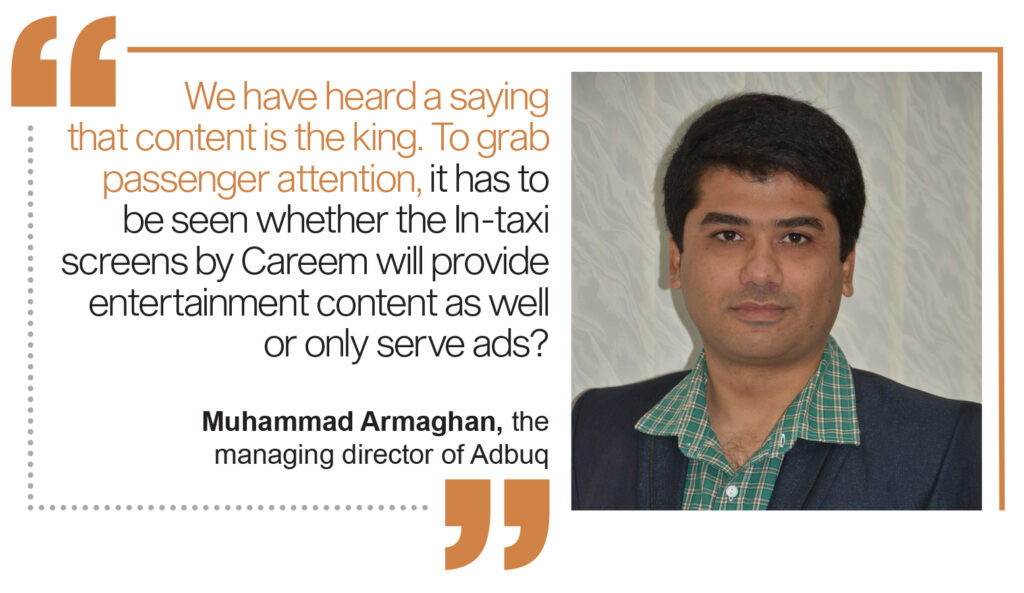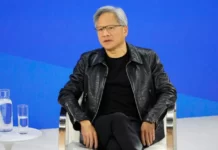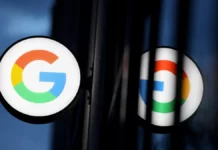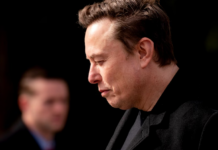How can a ride-hailing service like Careem, for example, find an additional revenue stream? Advertising. Imagine if with its vast fleet of vehicles in Pakistan, Careem began advertising by pasting stickers and advertising slogans on their cars, bikes and rickshaws. The permeability of these ad campaigns would be huge, even if they would entail massive logistical issues. And this doesn’t even have to be it, they can take it a step further.
Imagine sitting in your cab and finding a pre-installed tablet in front of you that has different advertisements flashing across it. The entire experience sounds a little far fetched – a maybe-possible but unlikely situation. However, it is exactly what the Singapore based ride-hailing service, Grab, did back in 2018. It launched an advertising business unit called GrabAds to provide an online to the offline advertising platform. Marrying an extensive on-ground fleet of vehicles with a rich digital presence across eight countries and more than 200 cities in Southeast Asia, in-car tablets by GrabAds represent an additional content distribution arm for Mediacorp, which co-created tailor-made content for in-transit viewing. On the advertising side, GrabAds allows advertisers to turn a fleet of cars, buses, and bikes into their own roving billboards to generate mass offline awareness.
This includes in-car branding, digital displays, in-car sampling, and in-car retail, transforming cars into mini mobile pop-up stores for customers to learn, test, and purchase new products while in commute. Capitalizing on the super app reach, GrabAds offers advertisers the opportunity to build and customize interactive widgets in the form of games, quizzes, and content to reach over 100 million smartphone users in Southeast Asia
Within months of announcing GrabAds, Go-JEK purchased Promogo in order to launch its own DOOH solution, capturing more value from the mobile real estate on its extensive fleet of two-wheel vehicles in the Southeast Asia region. In 2020, Go-JEK launched a programmatic OOH advertising solution called GoScreen through Promogo and is meant to democratize access to brand awareness touchpoints.
However, the idea has not been received very well in Pakistan, where a number of ride-hailing services with designs to become Pakistan’s ‘Super-app’ have felt the success of the project is highly unlikely. Speaking to Profit during the week GoScreen launched, Bykea CEO Muneeb Maayr said that the solution was currently not feasible for Pakistan given that its costs incurred by city permissions are upwards of five thousand rupees per day for a maximum of three to four zones in a city. He said that the revenue outcomes as a function of the costs of operating at the sophistication of GoScreen would not be commercially feasible for Pakistan.
At the time, a representative from Careem told Profit that the super app is exploring placing static ads inside its vehicles as an additional revenue-sharing medium for its captains and itself, adding the solution would not likely be programmatic with digital screens given the realities of rampant theft that would occur. Less than six months later, this stance has changed.
Last month, Careem announced that it was partnering with Lambda Marketing Solutions in order to launch a digital out-of-home (DOOH) ad platform. As the DOOH version of Adbuq, the ad platform intends to allow advertisers and agencies to place ads and content on up to five thousand data-sim enabled tablets installed in vehicles, measuring and monitoring performance in real-time. This is similar to the screens found in Faisal Movers.

“In-taxi DOOH screens have their own unique advantages over traditional media and pair well with overall OOH or DOOH campaigns I believe,” said Muhammad Armaghan, the managing director of Adbuq. “These smart screens must be able to determine ad frequency based on demographics and routes.
The mobility market leader intends to complete the installation of an additional five thousand screens within the next phase of three months. The initiative intends to create additional earning opportunities for the company itself, the captains behind the wheel, and the vehicle owners. Demand dictates supply and if enough advertisers show interest, Careem may eventually tap into all 800 thousand captains it has nationwide. It stands to reason that Careem would mirror parent-company Uber with branded vehicle wraps and car toppers in the near future.
According to the latest issue of the Association of National Advertisers (ANA) magazine, global spending on digital OOH will grow 19.2 percent in 2021 due in part to advances in technology for tracking the channel’s effectiveness and a rise in the number of brands that are looking to experiment with new, affordable channels amid the pandemic.
Within the DOOH space, Careem is going up against a range of DOOH media owners and DOOH media agencies, with the latter being important as the super app company intends to roll out a self-serve DOOH campaign management system, also known as programmatic ad buying.
While still in the development phase, the current workflow for interested parties is to drop an email and initiate a back & forth to go over campaign budgets, the number of ads, number of spots, the campaign timeline, and other variables. At the end of the campaign, Careem will then provide the enterprise customer with impact reporting in terms of eyeballs and impressions. In contrast, the end-of-campaign reporting offered by Uber includes a heatmap trend, geo-temporal engagement, and a breakdown of impressions by commuters and riders.
“If Careem enables Pakistani brands to tap into the benefits of programmatic in-taxi advertising, it will be a unique medium to reach an audience,” said Armaghan. “For optimal delivery of promotional messages, it can be broadcasted on a particular location and at a particular time. This brings ads to the riders directly. We have heard a saying that content is the king. To grab passenger attention, it has to be seen whether the In-taxi screens by Careem will provide entertainment content as well or only serve ads?”
The intended self-serve DOOH platform by Careem, however, would disrupt the status quo. If successful, the approach would allow advertisers to buy ad space and place campaign creatives across a range of DOOH inventory with the mobility leader. In a nation where advertisers are the root cause behind non-transparent media agencies, would decision-makers be prepared to use programmatic tools which create pricing transparency and limit instances of rebates or kickbacks?
Armaghan told Profit that in the current OOH advertising landscape, advertisers and agencies have to go through a long process of finding perfect billboards for their campaign. This includes the tedious and mind-numbing manual tasks of ascertaining the availability of specific inventory from OOH vendors using PDF files passed from between agencies, with no verification on how updated the information and the listed rates are.

In the Pakistan market, DOOH inventory comes in two forms: large format displays and digital displays in destination locations. According to sources at leading media agencies in Pakistan, the former category is dominated by Kinetic – which did not respond in time to capability queries – while the latter is dominated by Red Tape Media.
Large-format displays include highway billboards, ads on buses or the outside of other moving vehicles, and street furniture, which are displayed along sidewalks such as those on benches and bus shelters. Digital place-based media are visible at airports, on university campuses, in HoReCa, and in retail stores.
“OOH, like every medium, has its own cost working,” said a senior OOH media buyer. “The number of assets, the frequency or duration of a campaign, the out of the box approach versus static visual, creative executions and reach in terms of how many cities all comprise the cost of the campaign. In a simpler form costs are divided into three heads; media cost – billboard, vehicle or island -, production cost – fabrication, printing, installation – and lastly permission cost [which is ] paid to an authority by media owners.”
A leading media executive told Profit that DOOH has the most potential to grow in times to come as it gives advertisers the space to play with time-barred messages, promotions, customized real-time communication based on weather and traffic, allowing advertisers to change messages in the midst of campaign without incurring any additional costs.
“The challenge in using the programmatic app with DOOH is that every screen network has its own dashboard, display specifications, resolution parameters,” said a planner. “Hence the content piece developed is completely different from a creation perspective but it looks the same visually for the consumer. Outdoor agencies are taking key steps to bring this closer to automation but challenges do exist and need mitigation before we go to complete automation.”
Reaching 144 million people in the SEC A to C demographic annually, DOOH media owners and media planners Red Tape Media operates 400 screens across Pakistan including over 450 medium and large format screens at the domestic departure side at the Jinnah International Airport in Karachi.
“We do not offer a self-serve DOOH advertising campaign management platform yet as we feel the market is not receptive to such a platform currently,” said Anika Baig, the director of business development and strategy at Red Tape Media. “However we are constantly working on innovative tools which we feel would be adopted by our clients.”
The current workflow by which an advertiser or agency deals with Red Tape Media starts with finalizing a budget, against which in-house DOOH media planners map a range of touchpoints across the inventory network. Within 30 minutes of receiving content from advertisers, Baig told Profit that Red Tape Media can go live with a campaign. She said that the media owner can execute dynamic campaigns which can be integrated into real-time data, adding that the network offers weather, time, traffic, and other sources of real-time data integration.
“Our networks are built in such a way that we can integrate programmatically when we feel the market is mature enough,” said Baig. “We are constantly working on innovative ways to provide our clients with the best tools available. Our goal is always to provide maximum value addition to our clients and their campaigns.”
Agreeing with Baig, several advertisers spoke to Profit that too many stakeholders rely on the opaque and nontransparent nature of OOH and DOOH pricing in order to stay afloat. In a survey conducted by 24Grey, seven out of ten marketers said they were directly or indirectly offered a kickback for their OOH business, and nine out of ten OOH vendors admitted to having paid kickbacks to secure business or to install inventory.
Sources shared that a programmatic ad buying platform with transparent pricing would only hurt middlemen such as media agencies, adding that Careem needs to offer preferential pricing to media agencies that can deliver a larger volume of advertisers than what Lambda Marketing Solutions or its own internal teams can procure. Then there’s the infrastructure problem.
Sources told Profit that DOOH media owners were attempting to create programmatic integrations with demand-side platforms (DSPs) and related providers. Given the fragmented nature of the marketplace, there is no unified targeting, measurement, or even vocabulary to ease media buyers’ access to inventory across providers.
The final nail in the coffin is the dearth of media professionals with the skills, experience, and qualifications in programmatic media buying. Speaking to Profit, a Publicis Groupe media agency executive shared that there are less than 100 qualified programmatic media buyers in Pakistan – primarily employed at GroupM and Starcom – most of whom struggle with the manual work required to unify campaigns.
“Some DSP interfaces have not incorporated impression multipliers, which means that either the media owners or the media buyer have to manually calculate in order to normalize a campaign or to employ a third party to do so,” shared one programmatic media buyer. “There is no transparency on the variables that influence pricing and DOOH can lack precision, which hinders the transition from conventional to digital. Finally, the real-time claim of DOOH executions is seldom accurate, with only a paramount improvement in the buying component.”
Amid the claims of being a super app and the call to actions that can be created within the API ecosystem connecting Careem to a host of D2C brands, one of the ways in which the mobility leader could instill confidence is adding that the availability of data on transactions, coupled with location-based information which tracks passengers after exposure to a DOOH campaign.
In order to attenuate pushback from advertisers and agencies when it comes to its DOOH solution, Careem will have to invest in analytics & measurement tools partners combined with an independent media auditor. The goal here will be to offer decision-makers confidence amid the lag in the digital ecosystem.
An independent media auditor may recommend ameliorating measurement tools such as post-purchase surveys, focus groups, geofencing, and quick response codes with new metrics that leverage location data from mobile providers and other opt-in sources. If Careem can driving qualified shoppers towards in-store visits, it can prove the value of its DOOH solution.
With time, the mobility market leader may even abate its reliance on Lambda Marketing Solutions and allow advertisers and agencies to use the super app itself to plan, track, measure, and optimize DOOH campaigns, mirroring the vertical integration strategies of global unicorns.


























A well researched article with detailed insights.